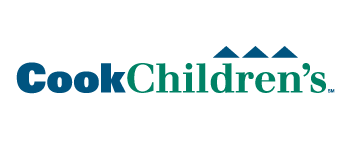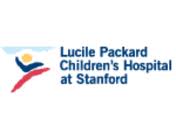Selinexor With Fludarabine and Cytarabine for Treatment of Refractory or Relapsed Leukemia or Myelodysplastic Syndrome
| Status: | Recruiting |
|---|---|
| Conditions: | Cancer, Blood Cancer, Blood Cancer, Blood Cancer, Blood Cancer, Hematology |
| Therapuetic Areas: | Hematology, Oncology |
| Healthy: | No |
| Age Range: | Any - 24 |
| Updated: | 6/9/2016 |
| Start Date: | August 2014 |
| End Date: | October 2016 |
| Contact: | Jeffrey E. Rubnitz, MD,PhD |
| Email: | referralinfo@stjude.org |
| Phone: | 866-278-5833 |
A Phase I/II Study of the Selective Inhibitor of Nuclear Export Selinexor (KPT-330) in Combination With Fludarabine and Cytarabine in Patients With Refractory or Relapsed Leukemia or Myelodysplastic Syndrome
The purpose of this study is to test the safety of selinexor (KPT-330) and to find the
highest dose of selinexor (KPT-330) that can be given safely when it is combined with two
chemotherapy drugs (fludarabine and cytarabine). This study will be done in two parts: Phase
I and Phase II.
The goal of Phase I is to find the highest tolerable dose of selinexor (KPT-330) that we can
give to patients with leukemia or MDS, when it is combined with fludarabine and cytarabine.
The goal of the Phase II portion of the study is to give the highest dose of selinexor
(KPT-330) in combination with fludarabine/cytarabine that was found in Phase I to be safe
for children with leukemia or MDS. The investigators will examine the effect of this
combination treatment.
PRIMARY OBJECTIVE:
- Determine a tolerable combination of selinexor, fludarabine, and cytarabine in
pediatric patients with relapsed or refractory hematologic malignancies included acute
myeloid leukemia (AML), acute lymphoblastic leukemia (ALL), mixed phenotype acute
leukemia (MPAL) and myelodysplastic syndrome (MDS).
SECONDARY OBJECTIVES:
- To characterize the pharmacokinetics of selinexor, when administered in tablet form,
after the first dose and at steady-state, as well as in combination with fludarabine
and cytarabine
- To estimate the overall response rate of selinexor given with fludarabine and
cytarabine in patients with relapsed or refractory hematologic malignancies
highest dose of selinexor (KPT-330) that can be given safely when it is combined with two
chemotherapy drugs (fludarabine and cytarabine). This study will be done in two parts: Phase
I and Phase II.
The goal of Phase I is to find the highest tolerable dose of selinexor (KPT-330) that we can
give to patients with leukemia or MDS, when it is combined with fludarabine and cytarabine.
The goal of the Phase II portion of the study is to give the highest dose of selinexor
(KPT-330) in combination with fludarabine/cytarabine that was found in Phase I to be safe
for children with leukemia or MDS. The investigators will examine the effect of this
combination treatment.
PRIMARY OBJECTIVE:
- Determine a tolerable combination of selinexor, fludarabine, and cytarabine in
pediatric patients with relapsed or refractory hematologic malignancies included acute
myeloid leukemia (AML), acute lymphoblastic leukemia (ALL), mixed phenotype acute
leukemia (MPAL) and myelodysplastic syndrome (MDS).
SECONDARY OBJECTIVES:
- To characterize the pharmacokinetics of selinexor, when administered in tablet form,
after the first dose and at steady-state, as well as in combination with fludarabine
and cytarabine
- To estimate the overall response rate of selinexor given with fludarabine and
cytarabine in patients with relapsed or refractory hematologic malignancies
Phase I will characterize the dose-limiting toxicities (DLTs) and determine the maximum
tolerated dose (MTD) or recommended phase II dose of selinexor when given in combination
with fludarabine and cytarabine.
Selinexor will be given twice weekly (on days 1 and 3) and escalated or de-escalated based
on tolerability. The rolling-6 design will be used for this study. Only cycle 1 of therapy
will be used to evaluate the DLT. Two to six participants can be concurrently enrolled onto
a dose level, dependent on 1) the number of participants enrolled at the current dose level,
2) the number of participants who have experienced DLT at the current dose level, and 3) the
number of participants entered but with tolerability data pending at the current dose level.
Accrual is suspended when a cohort of six has enrolled or when the study endpoints have been
met.
Once the recommended Phase II dose is determined, additional patients will be enrolled, if
necessary, so that at least 6 subjects are treated with the recommended Phase II dose to
determine MTD. After the MTD is determined, 12 additional patients will be treated at this
dose level for further evaluation of tolerability and response.
tolerated dose (MTD) or recommended phase II dose of selinexor when given in combination
with fludarabine and cytarabine.
Selinexor will be given twice weekly (on days 1 and 3) and escalated or de-escalated based
on tolerability. The rolling-6 design will be used for this study. Only cycle 1 of therapy
will be used to evaluate the DLT. Two to six participants can be concurrently enrolled onto
a dose level, dependent on 1) the number of participants enrolled at the current dose level,
2) the number of participants who have experienced DLT at the current dose level, and 3) the
number of participants entered but with tolerability data pending at the current dose level.
Accrual is suspended when a cohort of six has enrolled or when the study endpoints have been
met.
Once the recommended Phase II dose is determined, additional patients will be enrolled, if
necessary, so that at least 6 subjects are treated with the recommended Phase II dose to
determine MTD. After the MTD is determined, 12 additional patients will be treated at this
dose level for further evaluation of tolerability and response.
Inclusion Criteria:
- Participants must have a diagnosis of AML, MDS, ALL or MPAL and must have disease
that has relapsed or is refractory to chemotherapy, or that has relapsed after
hematopoietic stem cell transplantation (HSCT)
- Refractory disease is defined as persistent disease after at least two courses
of induction chemotherapy.
- Patients with AML, MPAL or MDS are eligible at first or subsequent relapse,
whereas patients with ALL are eligible at second or subsequent relapse or any
relapse that is refractory to salvage chemotherapy.
- Patients with AML or ALL must have ≥ 5% leukemic blasts in the bone marrow or
increasing levels of MRD in the bone marrow as assessed by flow cytometry. If an
adequate bone marrow sample cannot be obtained, patients may be enrolled if
there is unequivocal evidence of leukemia in the peripheral blood.
- Adequate organ function defined as the following:
- Direct bilirubin ≤ 1.5 x institutional upper limit of normal (IULN)
- AST (SGOT)/ALT (SGPT) < 3 x IULN
- Creatinine within normal institutional limits for age
- Prothrombin time (PT) and partial thromboplastin (PTT) ≤ 1.5 x IULN.
- Age criteria: Patients treated at collaborating sites and current St. Jude patients
who are on therapy or within 3 years of completion of therapy must be ≤ 24 years old.
All other St. Jude patients must be < 21 years old.
- Patients must be able to swallow tablets.
- Performance status: Lansky ≥ 50 for patients who are ≤ 16 years old and Karnofsky ≥
50% for patients who are > 16 years old.
- Patients must have fully recovered from the acute effects of all prior therapy and
must meet the following criteria:
- At least 14 days must have elapsed since the completion of myelosuppressive
therapy.
- At least 24 hours must have elapsed since the completion of low-dose or
non-myelosuppressive therapy, such as hydroxyurea, vincristine, steroids, or
low-dose cytarabine (up to 100 mg/m2/day).
- For patients who have received prior HSCT, there can be no evidence of GVHD and
greater than 60 days must have elapsed since the HSCT. Patients cannot be
receiving therapy, including steroids, for the treatment or prevention of GVHD.
All such medications must be discontinued at least 24 hours prior to enrollment.
Exclusion Criteria:
- History of cerebellar toxicity or cerebellar neurological findings on exam.
- Must not be pregnant or breastfeeding. Female patients of child-bearing potential
must agree to use dual methods of contraception and have a negative serum pregnancy
test at screening, and male patients must use an effective barrier method of
contraception if sexually active with a female of child-bearing potential. Acceptable
methods of contraception are condoms with contraceptive foam, oral, implantable or
injectable contraceptives, contraceptive patch, intrauterine device, diaphragm with
spermicidal gel, or a sexual partner who is surgically sterilized or post-menopausal.
For both male and female patients, effective methods of contraception must be used
throughout the study and for three months following the last dose.
- Patients with Down syndrome, acute promyelocytic leukemia, juvenile myelomonocytic
leukemia, Fanconi anemia, Kostmann syndrome, Shwachman syndrome, or other bone marrow
failure syndromes are not eligible.
- Use of investigational agents within 30 days.
- Any significant concurrent disease, illness, or psychiatric disorder that would
compromise patient safety or compliance, study participation, follow up, or
interpretation of study research.
- Unstable cardiovascular function:
- symptomatic ischemia
- congestive heart failure NYHA Class > 3
- myocardial infarction (MI) within 3 months
- Uncontrolled infection requiring parenteral antibiotics, antivirals, or antifungals
within one week prior to first dose. Infections controlled on concurrent
anti-microbial agents are acceptable, and anti-microbial prophylaxis per
institutional guidelines are acceptable.
- Known human immunodeficiency virus (HIV) infection (pre-study testing not required).
- Patients with malabsorption syndrome, or any other disease significantly affecting
gastrointestinal function.
We found this trial at
3
sites
262 Danny Thomas Pl
Memphis, Tennessee 38105
Memphis, Tennessee 38105
(901) 495-3300

Principal Investigator: Jeffrey E. Rubnitz, MD, PhD
Phone: 866-278-5833
St. Jude Children's Research Hospital St. Jude is unlike any other pediatric treatment and research...
Click here to add this to my saved trials
801 7th Avenue
Fort Worth, Texas 76104
Fort Worth, Texas 76104
(682) 885-4000

Principal Investigator: Kenneth M. Heym, MD
Phone: 682-885-4007
Cook Children's Medical Center Cook Children's Health Care System is a not-for-profit, nationally recognized pediatric...
Click here to add this to my saved trials
725 Welch Rd
Palo Alto, California 94304
Palo Alto, California 94304
(650) 497-8000

Principal Investigator: Normal J. Lacayo, MD
Phone: 650-497-8953
Lucile Packard Children's Hospital Stanford University Stanford Children's Health is the only network in the...
Click here to add this to my saved trials